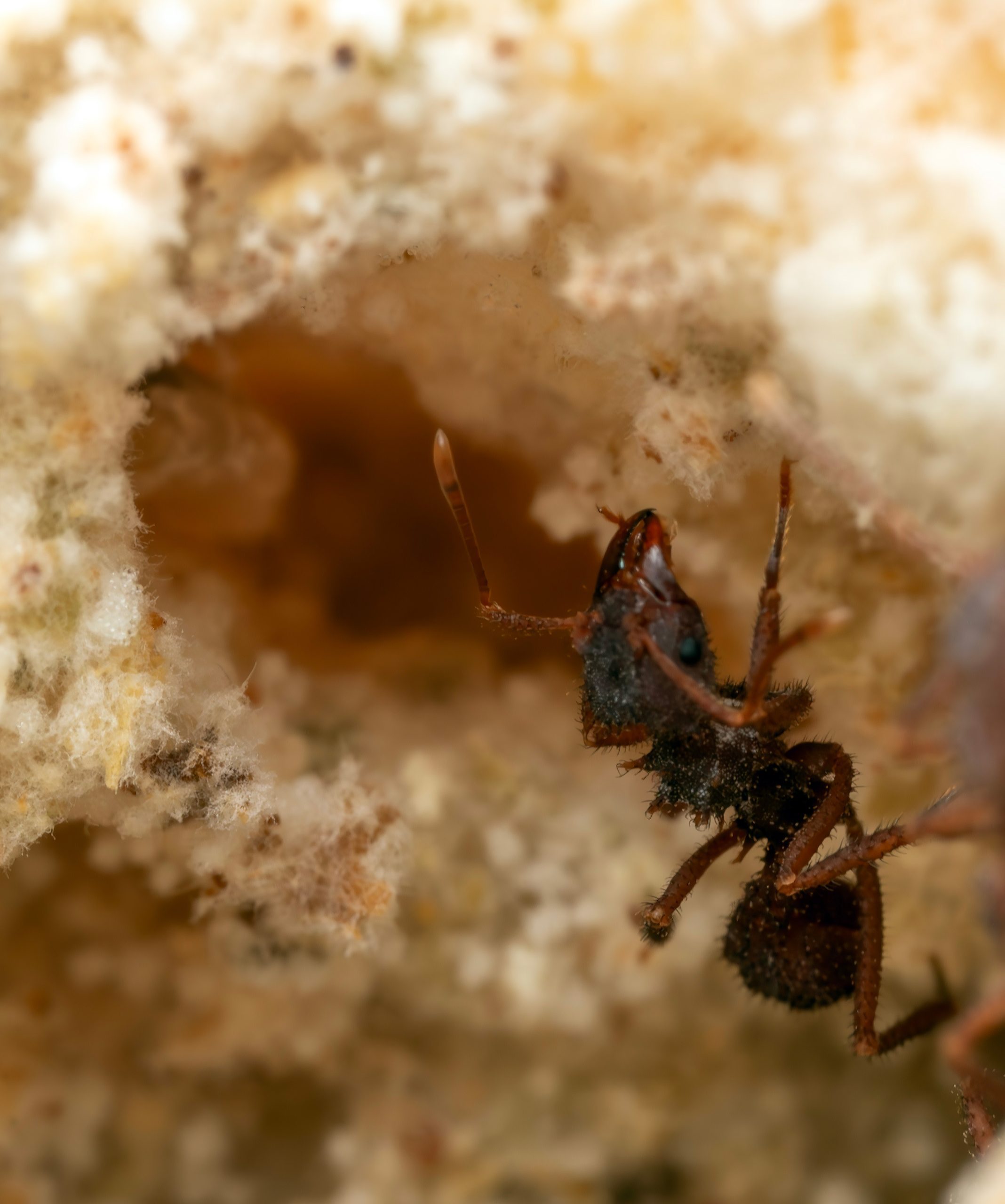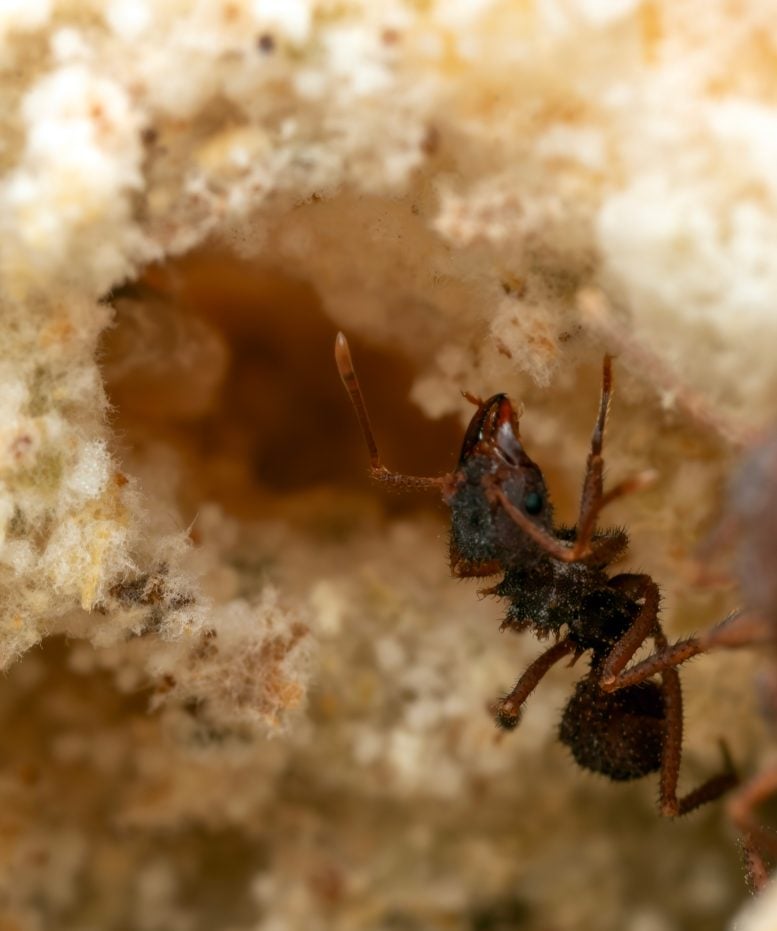

A new study finds that attine ants developed structural adaptations to host bacteria, specifically Pseudonocardia, which aids their fungal farming.
A study explores the evolution of beneficial bacteria residing within and on the surface of farming ants. Attine ants engage in a mutualistic relationship by cultivating fungi, one of the most extensively studied symbioses in nature. In the 1990s, researchers discovered an additional partner in this relationship: an actinobacterium known as Pseudonocardia. This bacterium inhabits the ants’ cuticle—their protective exoskeleton—where it is nourished by secretions from subcuticular glands.
Pseudonocardia is known to kill the fungal pathogen Escovopsis, that might destroy the ants’ mutualistic fungus. Jacobus J. Boomsma and colleagues sequenced samples from 194 ants from 11 attine species collected in Panama to assess the extent of coevolution between ants and their cuticular residents.
Three of the 11 attine species had abundant Pseudonocardia, including two Acromyrmex leaf-cutting ants. Five other species had cuticular actinobacteria other than Pseudonocardia, with no clear phylogenetic patterns.
Insights into Ant Gland Structure and Function
The authors examined the ants’ nourishment glands with transmission electron microscopy, revealing similar structures across species, suggesting that attine ants evolved structural and functional adaptations for hosting cuticular actinobacteria only once, shortly after the origin of fungus farming.
Clearly, however, the glands are capable of nourishing bacterial strains other than Pseudonocardia. Comparing phylogenies of ants and their cuticular and gut Pseudonocardia indicates that Pseudonocardia were initially gut symbionts and became cuticular symbionts late in attine evolution, around 20 million years ago, coincident with the evolution of new genera in Central/North America.
According to the authors, earlier contradictory findings can be explained by not separating guts and cuticles during sequencing, and because ants easily acquire non-natural actinobacteria when held for longer periods in lab settings.
Reference: “From the inside out: Were the cuticular Pseudonocardia bacteria of fungus-farming ants originally domesticated as gut symbionts?” by Tabitha M Innocent, Panagiotis Sapountzis, Mariya Zhukova, Michael Poulsen, Morten Schiøtt, David R Nash and Jacobus J Boomsma, 15 October 2024, PNAS Nexus.
DOI: 10.1093/pnasnexus/pgae391